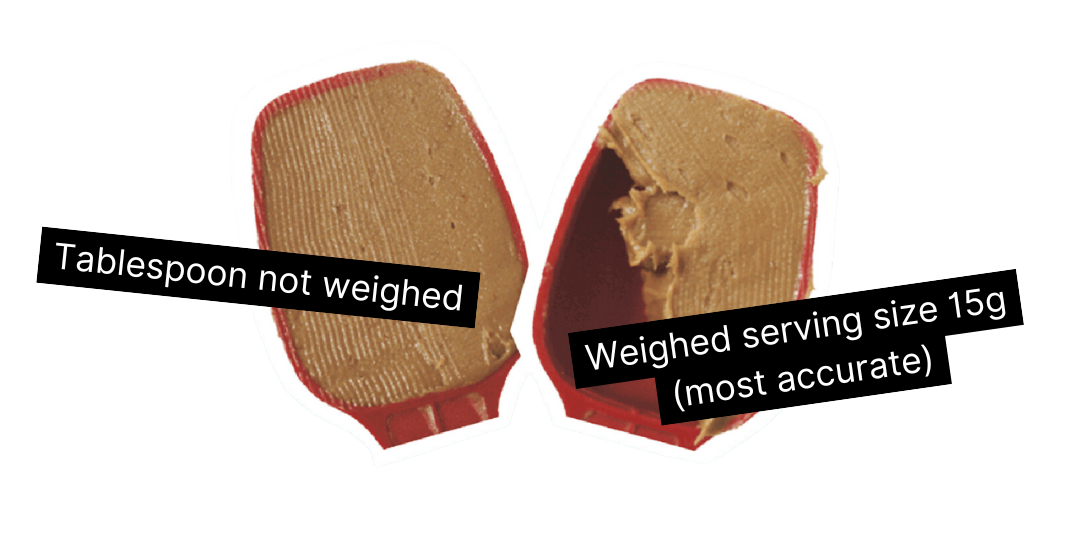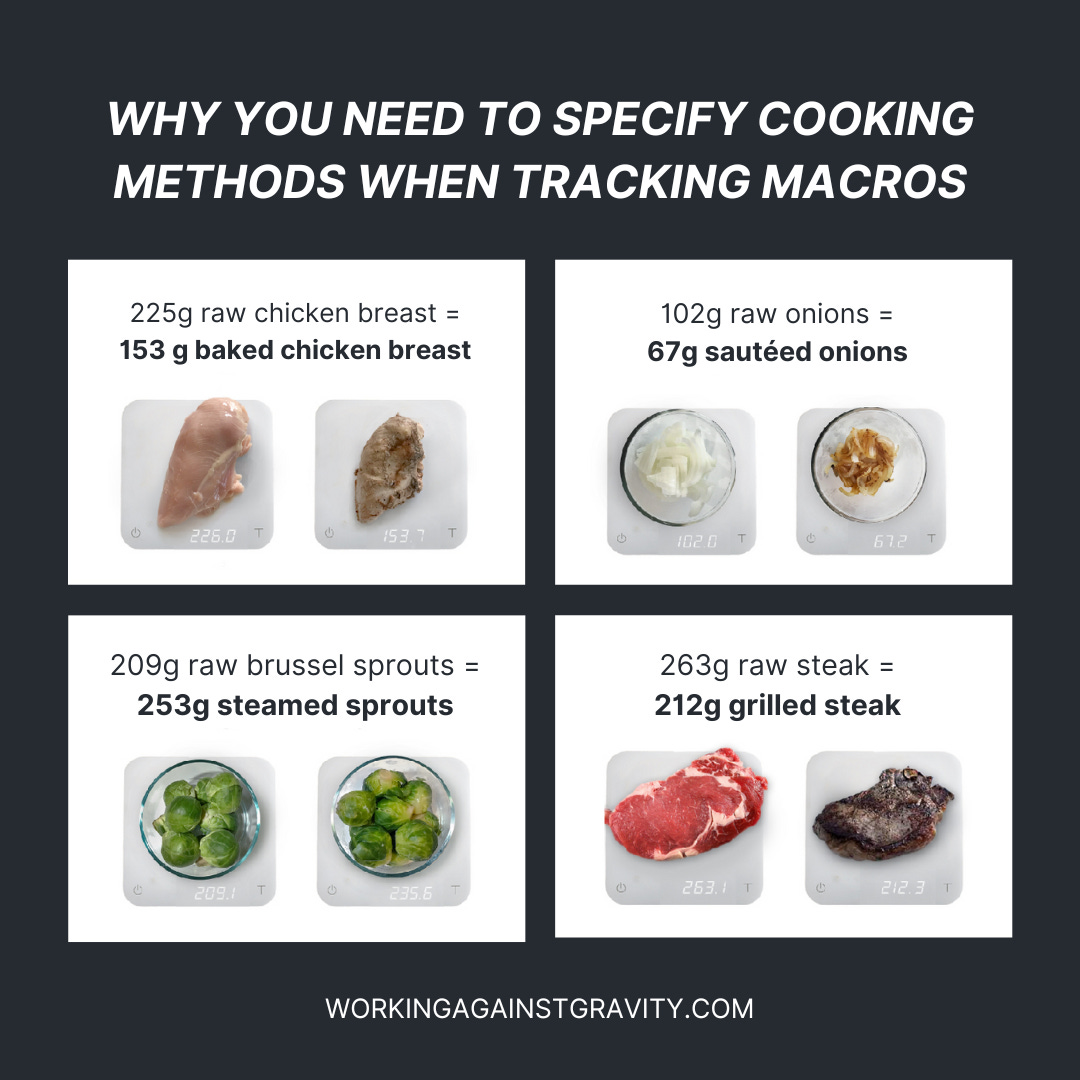
Should I weigh my food before cooking? Do the macros change when I prepare it? What about frozen food?
If you’ve ever typed these questions into Google (guilty 🙋♀️), you’re not alone. It’s hard enough to plan dinner for the week, let alone knowing when or how to weigh your food portions.
Working Against Gravity nutrition coaches know that flexibility and individuality make all the difference to whether or not a nutrition plan is successful. Because of this, weighing and tracking food can look different from one person to another.
Why Weighing Your Food Matters
First, let’s talk about one of the biggest tools for making sure you're actually on track: weighing your food. It might not sound exciting, but it’s a game-changer for accuracy—and that can make a huge difference in how quickly and consistently you see results.
When you track food in an app, you're not just logging what you eat, you’re logging how much you eat. And small discrepancies can add up quickly. A scoop of peanut butter "by eye" might be 1 tablespoon… or it might be closer to 2. That’s the difference between 95 and 190 calories. Multiply that by a few meals a day, and it's easy to see why progress might stall.
Using a digital food scale helps eliminate the guesswork. You weigh your portion, log that weight into your tracking app, and the app calculates the macros for you. Simple, right?
A quick (and often confusing) note: the weight of a food is not the same as the amount of protein, carbs, or fats in that food. For example, 100g of grilled chicken isn’t 100g of protein—it’s about 31g of protein, with a few grams of fat.
Do You Have to Weigh Your Food?
Not necessarily. If you're looking for maximum precision—like prepping for a competition, hitting a weight class, or accelerating progress, you'll benefit from weighing everything. But if your priority is long-term sustainability, you can absolutely get results without weighing every bite. In fact, many people start by weighing for a few weeks just to get a feel for real portion sizes, then shift to a more relaxed approach.
Bottom line: even a short phase of weighing can be an incredibly helpful learning tool. It gives you a much clearer understanding of what your meals actually contain, and that knowledge empowers you to make smarter choices, whether or not there’s a scale nearby.
One Crucial Tip: Match the Form
If you weigh your food raw, log it raw. If you weigh it cooked, log it cooked. Cooking changes the weight of food due to water loss or absorption (think: grilled chicken vs. boiled pasta). So, always make sure the food entry in your app matches how you weighed it—otherwise, your macros might be way off.
Food volume changes when cooked due to either losing or absorbing water. As a general rule of thumb, proteins lose weight when cooked, and starches gain weight. But, when the weight changes, the calories and macronutrients don’t change — 225g grams of raw chicken breast has the same nutrition as 153 grams of cooked chicken breast.
Because of this weight change, weighing your food raw is the most accurate way to measure your portions. You can’t completely control the volume change, which can make a big difference in portion size. Nutrition labels are also usually written with raw weights listed. But, we know weighing your food before you cook it can make it tough to prepare anything in advance or cook more than one serving at a time, so it’s not always realistic.
Unless you’re training for an important time-bound goal (like an Olympic weightlifter who needs to make weight for a meet), you can probably get away with searching for cooked entries in your tracking app. Just stay consistent — you’ll be more accurate if you always track your food cooked or always track your food raw than if you flip-flop regularly and don’t double-check your entries.
Last Word on Accuracy
You don’t need to be perfect forever—but practicing accurate tracking for even a short period can level up your awareness and make future decisions way easier. You can be successful and still make progress towards your goals without weighing every bite. But if you’re aiming for fast or specific results right now, weighing your food might be the next best step.
If you're not sure what's right for you, working with a WAG coach can help you make the call and adjust along the way. You're never in this alone.
Schedule a Free Intro Call
Working Against Gravity has led the macro tracking and health space for over a decade. Our team doesn’t just understand the science of nutrition—we’ve spent years mastering the art of tailoring it to fit your life. That means no cookie-cutter plans, just real strategies that have worked for over 30,000 people.
Schedule a free call with our team to learn how working with a 1-on-1 WAG coach will help you reach your goals.






